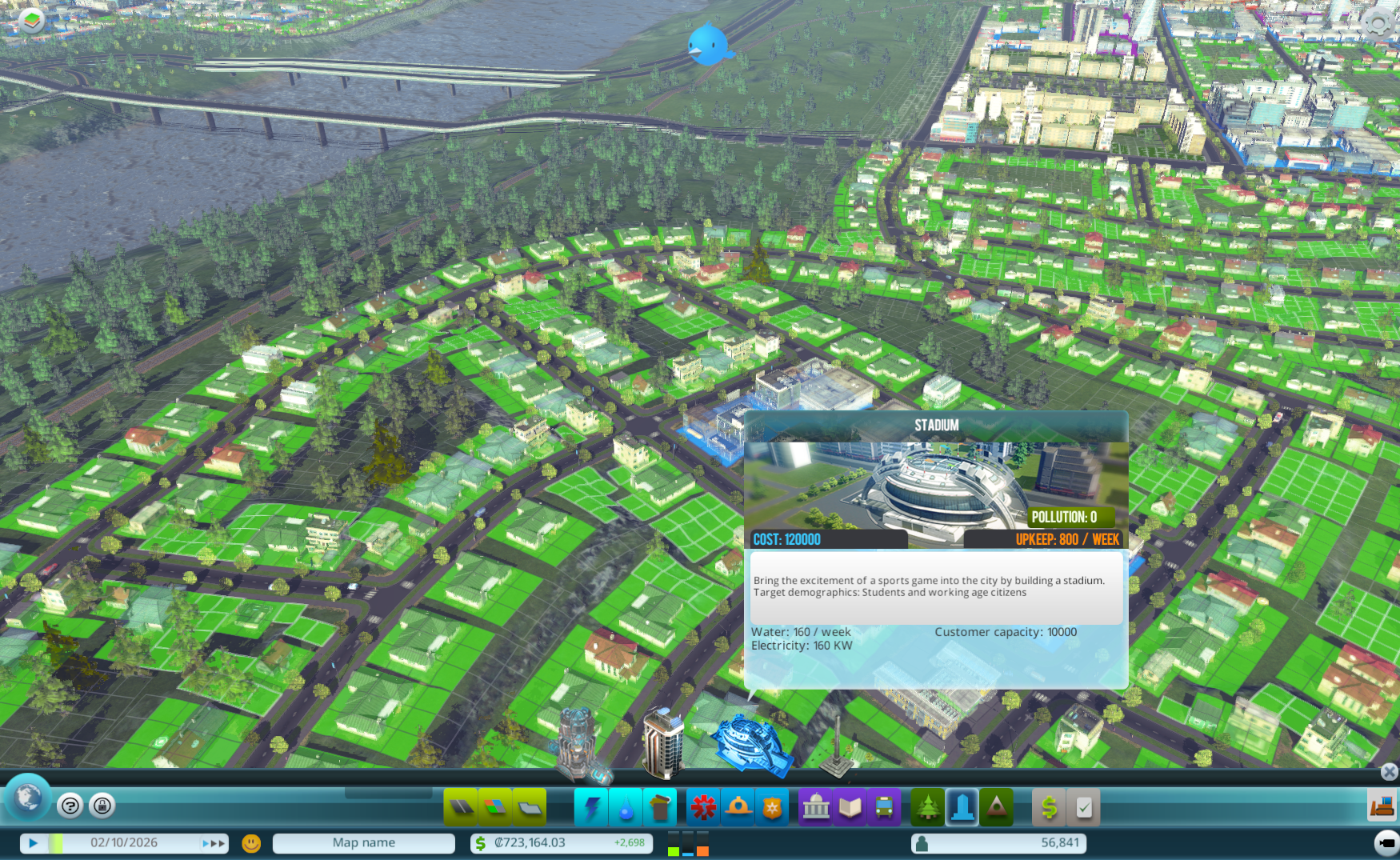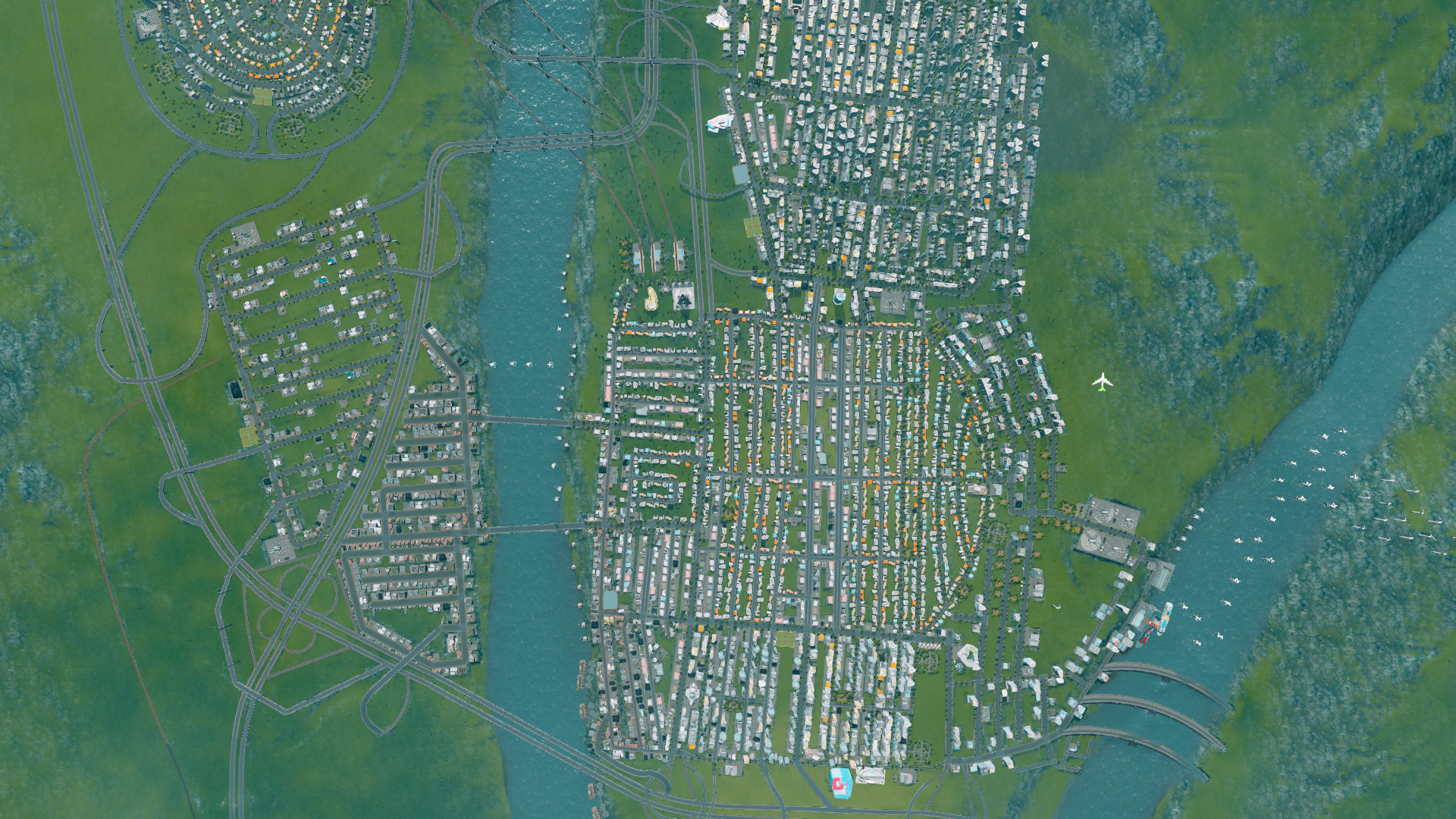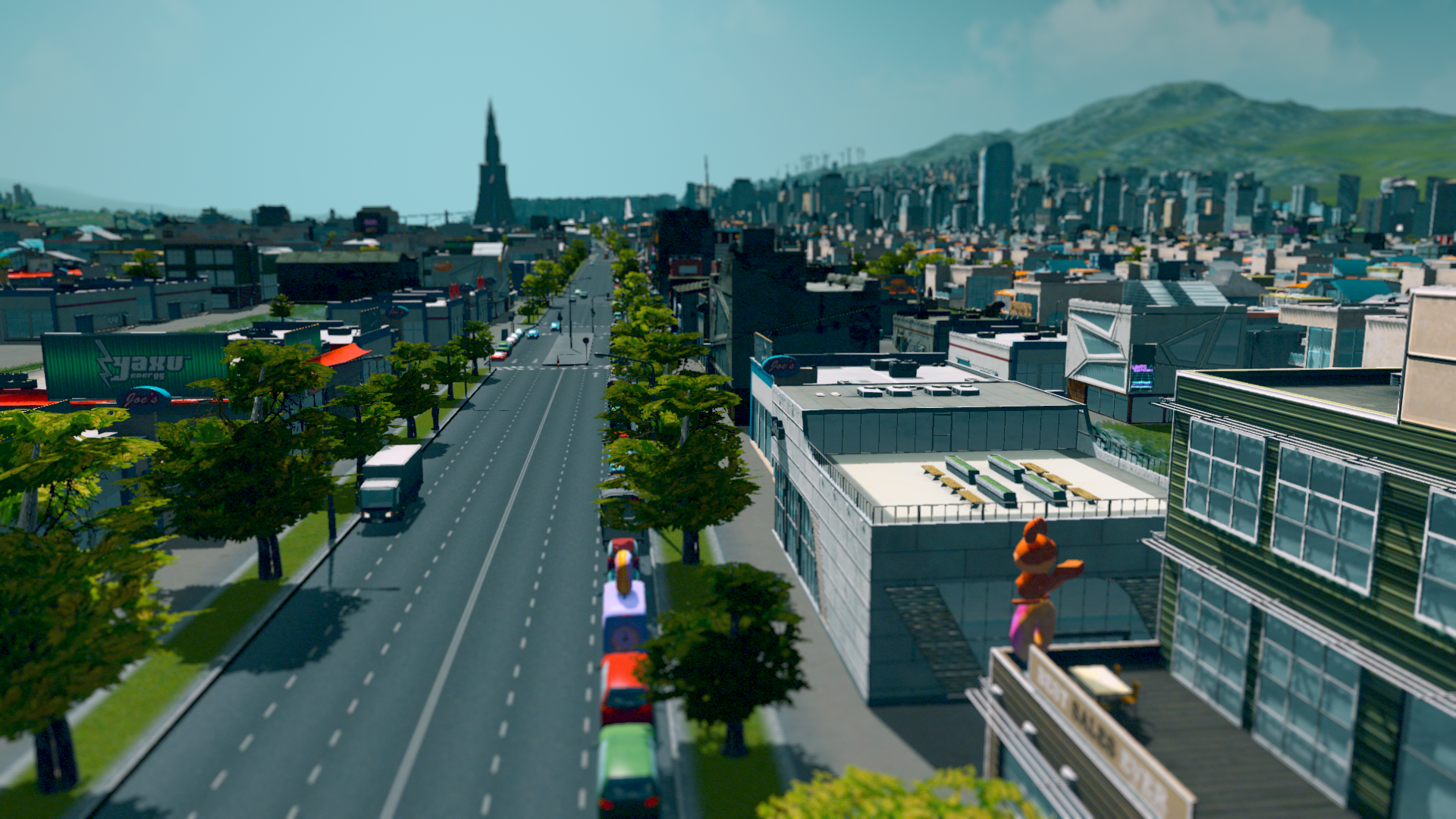Cities: Skylines preview: If urban planning was like Photoshop

The idea for the original SimCity came to Will Wright when he discovered that the tools he was using to make a different game were a fun game in their own right. By extension, every city building sim should make its tools the highest priority, balancing flexibility with usability. Cities: Skylines look really promising in that respect.
I'm not interested in multiplayer innovation, or over-designed modes that aim to streamline the city building genre. At this point, all I want is to start with a barren landscape, and lose hours and hours in transforming it into the biggest metropolis possible.

Click the arrows at top-right to view full size.
That's what Cities: Skylines looks like. Colossal Order CEO Mariina Hallikainen's short demonstration started with her picking a square-kilometer plot of land near a river. First, she connected the city to a bigger transportation route that already exists on the map, a multi-lane highway in this case, though we later saw train tracks serve the same purpose. Then she laid out few roads in straight lines and curves and designated the areas around the roads for different building types: residential, industrial, etc. Finally, she secured the basic utilities by drawing a pipe to the nearby river, and power by setting up wind turbines and connecting them to the city grid with power lines. As you'd expect, she was careful to place the wind turbines a little out of the way, as they produce noise pollution that irritates residents, as indicated by a circle around the turbine. With that, she had a basic city foundation to build on.
What impressed me most about that first part of the demonstration was that there seemed to be no restriction on where Hallikainen placed things, and how flexible the drawing tools looked. There were different brush sizes and types for every purpose. Take for example the grid around the roads where you build structures. You can simply use a fill tool to paint large section for different purposes, or you could zoom in and decide to paint a tiny residential square in a middle of an industrial zone.

Ghost town
Later, in a bigger city, I saw how easily Hallikainen divided it into different districts with a similar brush tool. This allowed her to set different codes for different parts of the city to benefit citizens (keeping them away from noise and smoke pollution, different tax rates, and so on). But you could also use districts for aesthetic reasons. If you don't want a part of the city to be filled with skyscrapers, you can set a building code that limits structure height.
Skylines is also flexible in the sense that it's being completely opened up to the community with Steam Workshop. Colossal is a small team of less than 20 people, and it's hoping the community will make Skylines a much bigger game than Colossal could make on its own. Ambitious modders will be able to import their own buildings from most 3D modeling programs, set the values of those buildings, as well as create their own maps. If a modder was dedicated enough, he could theoretically use Skylines to create everything he needed for a moon colony.
Cities can grow to a million residents, with every one of them simulated from the time they move in or are born, to the time they leave or die. Each map is made up of 25 2x2km tiles, and your city can expand into up to nine of those tiles. The advanced city we saw spread into a 3x3 grid, but you can expand in whatever configuration you want as long as it's adjacent, so you could, for example, keep growing along a river.
Keep up to date with the most important stories and the best deals, as picked by the PC Gamer team.

Colossal's Cities in Motion is a mass transit simulator, so Hallikainen was very confident in that aspect of Skylines. If a citizen needs to the hospital, the ambulance will actually have to reach him, pick him up, and take him there. Hallikainen even followed one person as he left work and went down the street to the mall to go shopping. SimCity made the same promise, you may recall.
I was impressed with those details, but since the simulation can only handle tracking so many moving parts, the city also looked a little underpopulated, with few pedestrians and cars in the streets. Even congested areas didn't look like bumper-to-bumper traffic.
It probably also didn't help that I watched the trailer for the newly announced Cities XXL right before I saw Skylines. It's not a fair comparison because Skylines was an early build running in real time while the Cities XXL trailer was a neatly edited sizzle reel, but man did it look pretty, which is another thing I really want from a modern city builder.
Skylines looked okay as it was, but I hope it'll look better by launch. It could use more density, building variety—some old fashion pizzazz, as they say, in the form of bloom, blur, and other effects that don't really impact how you play, but still make admiring what you've built more rewarding.

